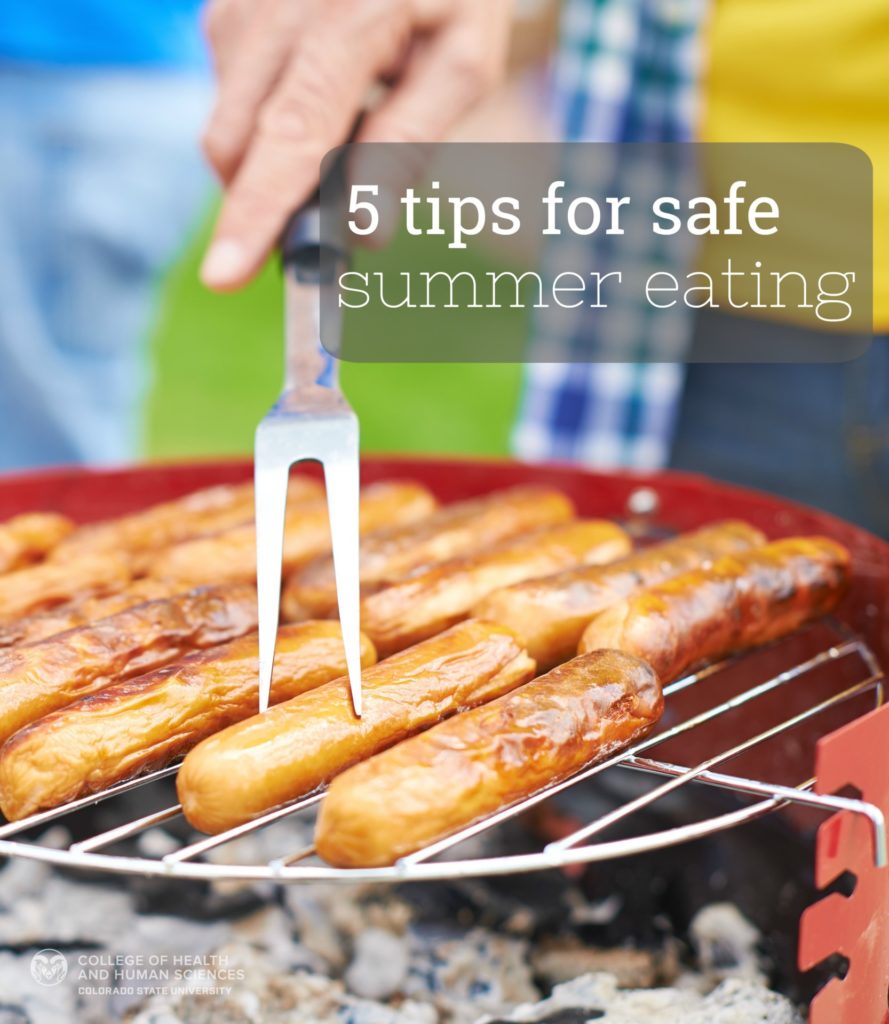Now is a great time to eat outside! But when planning your next barbecue, picnic or camping trip, be aware that summertime rates of food poisoning skyrocket. Warm weather provides the ideal opportunity for the bacteria in food to multiply and grow, potentially resulting in stomach cramps, nausea, vomiting and diarrhea. Older adults, pregnant women, children and those with a compromised immune system are especially at risk for serious complications, so it’s important to plan ahead and take precautions for food safety
 1.Keep it clean. The first step to preventing foodborne illness (the official name for what we call food poisoning) is to clean – surfaces, utensils, dishes and hands – thoroughly and often. Then clean your produce by washing it under running water. Wash all fruits and vegetables, even if you don’t eat the skin; you may remember reading about illness from melons due to bacteria on the skin getting onto the fruit once you cut it. The same can happen with other foods that you peel or cut, so wash them and pat dry with a clean cloth or paper towel.
1.Keep it clean. The first step to preventing foodborne illness (the official name for what we call food poisoning) is to clean – surfaces, utensils, dishes and hands – thoroughly and often. Then clean your produce by washing it under running water. Wash all fruits and vegetables, even if you don’t eat the skin; you may remember reading about illness from melons due to bacteria on the skin getting onto the fruit once you cut it. The same can happen with other foods that you peel or cut, so wash them and pat dry with a clean cloth or paper towel.
2.Grilling? Burgers and chicken are particularly prone to bacteria, so be sure to keep raw meat and juices away from other food, and cook thoroughly. Use a meat thermometer to make sure burgers cook to an internal temperature of at least 160°F and chicken reaches at least 165°F inside. Once cooked, use new utensils that did not touch the raw meat.
3.Avoid cross-contamination. This means never reuse a plate or knife without washing it first, and always use different platters for raw and cooked food. Do not let raw foods, especially meat, poultry and seafood, come into contact with produce. Likewise, use different cutting boards for each.
4.Watch the temperature. The Danger Zone for food is between 40°F and 140°F; in this range, bacteria can double in less than 30 minutes. Keep cold foods (such as salads, eggs, fruit, vegetable platters, dips and desserts) in the refrigerator below 40° until you are ready to serve it, then keep it out no longer than two hours (one hour if the air temperature is above 90°F). While serving, keep it cold by using coolers, insulated serving dishes, ice packs and/or ice. Keep all of this in the shade if possible. Keep hot food hot by using foil or insulated containers; for your grilled food, move it to the side of the grill rack to keep it hot but prevent overcooking. As with cold foods, do not let it sit out longer than two hours, or one hour in hotter temperatures.
5.If in doubt, throw it out. The Food and Drug Administration coined this phrase to remind you that, even if you follow the above guidelines, if you are not sure if a food is spoiled, throw it away, since you cannot always see or smell bacteria. They offer additional information at www.fda.gov.
With the right practices, you can enjoy your outdoor get-togethers and keep food safe for everyone.
Melissa Wdowik, PhD, RDN, FAND, is an assistant professor at Colorado State University in the Department of Food Science and Human Nutrition, and director of the Kendall Reagan Nutrition Center.
For delicious recipes, nutrition tips, and to find cooking and nutrition classes, go to the Kendall Reagan Nutrition Center website. More great info also available at the College of Health and Human Sciences Pinterest board.